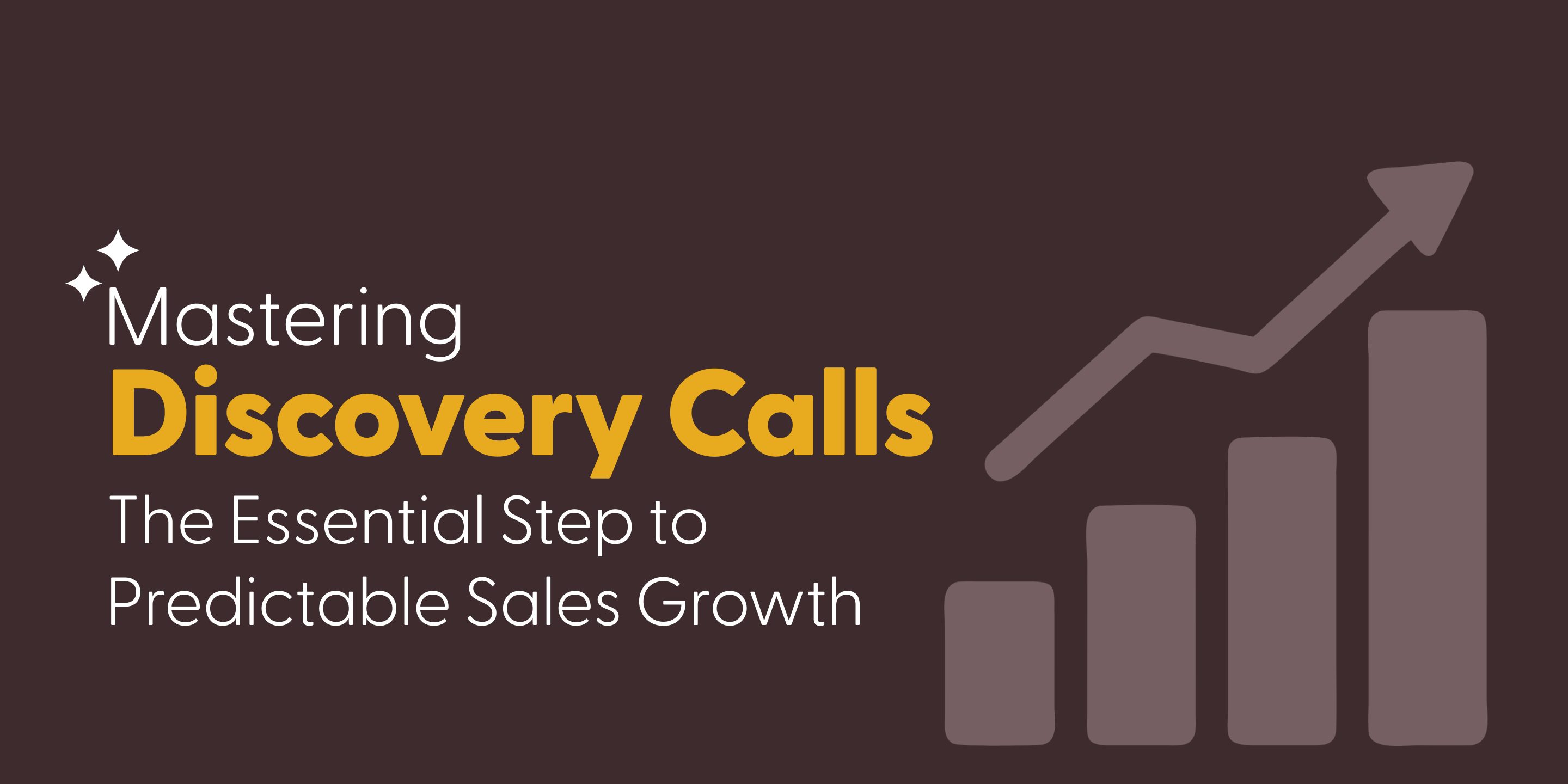
Mastering Discovery Calls: The Essential Step to Predictable Sales Growth
In the world of B2B sales, your discovery call isn’t just a formality; it’s one of the most critical stages of your sales process. A well-executed discovery call can set the foundation for a long-term, profitable client relationship, while a poorly executed one risks losing the deal entirely.
At Roadmap, we believe that discovery calls aren’t just about asking the right questions; they’re about creating an experience that builds trust, uncovers key pain points, and sets the stage for meaningful sales conversations. So, how can you make sure your discovery calls are effective and lead to predictable sales growth?
Let’s break down the essential steps you can take to master discovery calls and turn them into a repeatable driver of sales success.
1. Preparation: Set Yourself Up for Success
One of the biggest mistakes salespeople make with B2B sales is not preparing properly for the discovery call. Preparation is your competitive edge. This isn’t just about knowing the prospect’s name and company; it’s about diving deep into their world.
Here’s how you can prepare:
- LinkedIn: Review the prospect’s profile, recent posts, and shared content. What are they interested in? Do you share any mutual connections that could give you insights into their world?
- Company Website: Understand their offerings, market position, and recent updates.
- Google Search: Look for any press releases, funding news, leadership changes, or industry trends that might impact their business.
- AI Profiling Tools: Platforms like Humanic AI can help you understand the personality traits and motivators of your prospect, so you can tailor your approach to their communication style.
This research isn’t just a time-saver, it’s a trust-builder. When you show you’ve done your homework, it demonstrates that you’re committed to understanding their challenges, which builds credibility.
2. Structure the Call with ACE
A structured approach is key to a successful discovery call. Use the ACE framework to guide your conversation and keep it on track:
- Agenda: Clearly define what you want to cover. Be intentional about the conversation and ensure both parties understand the focus.
- Confirm: Validate that the meeting time still works and that they’re ready to engage. It’s about setting clear expectations and ensuring alignment on the purpose of the call.
- Expectations: State your desired outcome. Whether it’s a follow-up demo, proposal, or next meeting, ensure both parties are aligned on what success looks like.
This framework gives the conversation a clear direction, ensuring you don’t wander off-topic while leaving room for meaningful dialogue.
3. Use a Discovery Playbook to Keep the Conversation On Track
Once you’re on the call, don’t just wing it. A discovery playbook is essential for keeping the conversation structured and consistent. Your playbook should include:
- Open-ended, insight-driven questions that invite the prospect to share more about their business and challenges.
- Triggers that prompt you to dig deeper into their pain points (e.g., “Tell me more about that…”).
- Red flags to help you identify if the prospect is a good fit or if they’re not aligned with your solution.
- Qualifiers such as BANT (Budget, Authority, Need, Timeline) or MEDDIC (Metrics, Economic Buyer, Decision Criteria, Decision Process, Identify Pain, Champion), which help you assess whether they’re a qualified lead or not.
This playbook ensures consistency in your approach and helps you stay on track, making it easier to scale your sales process and coach your team.
4. Connect the Dots: Uncover Needs and Impact
Listening is only half the battle. The true skill lies in connecting the dots between what your prospect shares and how it impacts their business. Don’t just focus on identifying their needs; uncover the impact of those needs.
Ask yourself questions like:
- What’s the cost of this problem to their business?
- How is it affecting their team, revenue, or customer experience?
- What happens if they don’t solve it?
This isn’t just about understanding pain points; it’s about turning those pain points into urgent, actionable issues. You’ll transition from being just another vendor to becoming a strategic partner.
5. End with Clear Next Steps
A common mistake many salespeople make is failing to set clear next steps at the end of the call. It’s crucial that you leave the call with everyone knowing what happens next.
Recap what you’ve learned:
- Confirm the next steps, whether that’s sending a proposal or scheduling a follow-up meeting.
- Ensure that both you and the prospect are clear on what actions need to happen and when.
For example:
“Thanks for sharing all that. It sounds like [summary of their needs]. I’ll put together a tailored proposal and we can review it on [date]. Does that work for you?”
This clarity ensures that the conversation doesn’t lose momentum and keeps the deal moving forward.
6. Document and Follow-Up
After the discovery call, don’t forget to document the details in your CRM. Record everything that was discussed, including pain points, needs, and the next steps.
Send a follow-up email recapping the call and confirming the next action. This shows that you’re organized, reliable, and committed to following through.
Master the Discovery Call, Master Your Sales Process
Discovery calls are the first real opportunity to turn a cold lead into a warm prospect. By preparing thoroughly, following a structured approach, and actively listening, you can ensure that every discovery call contributes to predictable revenue growth.
Ready to put these strategies into action? Download the Revenue Factory Toolkit and start transforming your sales process into a repeatable revenue engine today.
Want more insight like this?
Check out the full podcast on Driving Growth or
Schedule a free strategy callThe Driving Growth Podcast
Podcast Episode 13: Mastering Discovery Calls: Frameworks for Sales Success

